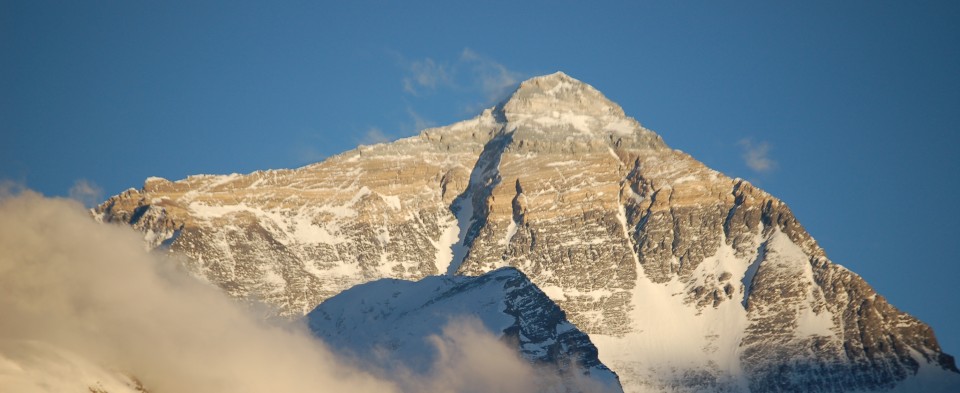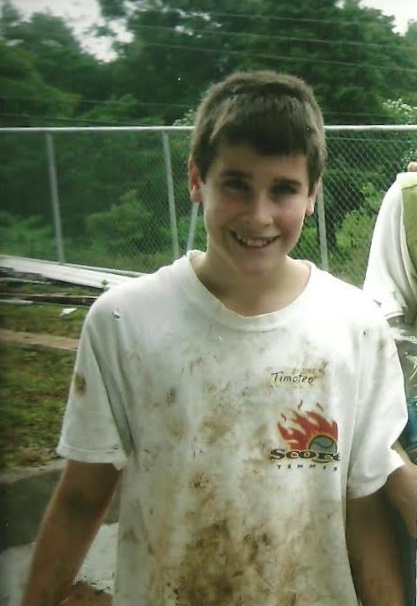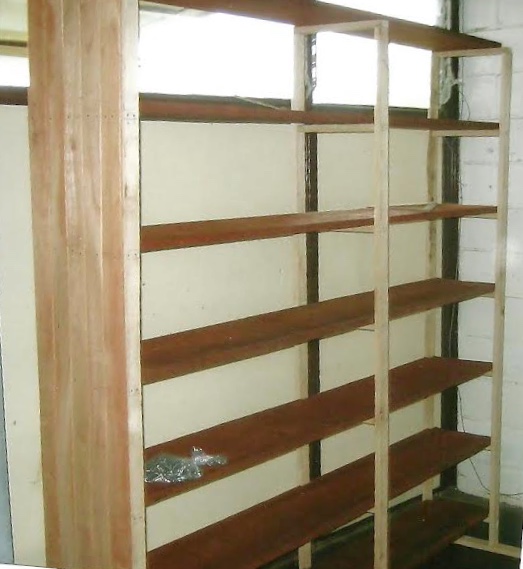In a post on family travel a few months ago, I briefly introduced the other eight feet that wander the globe with me from time to time. While we’ve had many good vacation times overseas, the five of us have also spent some time volunteering abroad, a vastly different way to really learn about other lands and cultures.
We all agree that our first and longest work tour was the best – a nine-day building trip in the Monteverde area of Costa Rica. We had been to the country before and remembered technicolor sunsets over the Pacific, ziplining through the jungle canopy, and nature walks in the rainforest, but nothing prepared us for the level of poverty we would experience for a week and a half the second time. This trip was the polar opposite of our previous one and, as we soon found out, it was quite different from our life here at home, too.
We arrived in Santa Elena, deep in the Monteverde cloud forest, to heavy rains. The road into the town was unpaved, and even when wet, its firm ridges rattled our van and our brains for what seemed like an eternity. We dropped our bags in the spartan rooms we were assigned, let out tiny screams when we spied a gigantic spider in the shower and tiny sighs when we felt the thin, rock-hard beds, and then bolted out to walk into town to find food and an internet café.
Water rushed down the hill, swirling around our ankles and backing up into the kiosks set up along the well-traveled route. This was hint number one of the dirt to come. Staying positive, we loaded up on beverages and snacks and returned to our simple accommodations to start a routine that we would follow for the next nine evenings: taking turns showering off the day’s grit and then assembling for beers in a courtyard of plastic chairs.
Each morning we would ride for over an hour on rutted dirt roads into a tiny village in the hills. Here, our overall goals were to dig a hole and two trenches for a new septic system, finish the interior of a school lunch building, dig a culvert, and paint a community center. There were no power tools to use; we mixed concrete by hand and transported it by wheelbarrow, both backbreaking jobs.
We framed walls, tiled floors and countertops, built bookcases, cleared a landslide (and felt a powerful temblor one afternoon) and laid pipe in our new trenches. Yes, we were exhausted. And filthy.
We worked under a volunteer philosophy called servant learning in which we were asked to follow local instructions and leadership; we were there to provide manpower and friendship, not control. Oftentimes, the work did not progress in a way we ever-so-efficient Americans were accustomed to. We moved concrete blocks into a pile to make room to dig trenches, then had to move them again to build walls. We built walls that had to be deconstructed when room measurements were inaccurate.
We cemented a floor before someone mentioned we needed to run pipes under a counter. We had to chisel out spaces for electric sockets, hacking into 2x4s and drywall. With no levels available, we eyeballed our shelves for squareness; once propped on the uneven floors, that notion proved moot anyway.
And we found all sorts of interesting things in our new trenches!
Beyond the work, we forged a deep affection for the villagers. At first, they were shy, speaking in quiet voices with eyes lowered. They cooked us tiny tasty tortillas for lunch each day and worked alongside us before and after the meals. They were masters of their own domain, and even though we thought we knew better, most of the time their ways were the best ways to get things done. As the days passed and we worked together for hours on end, the formality began to crack and we laughed with our new friends, the adults sharing a smile over a wheelbarrow gone rogue and the kids rustling up impromptu soccer games when they got bored digging holes.
At the end of our work tour, the villagers arranged a dance party for our final night. With a boom box and tables laden with food, we celebrated our building accomplishments and cemented the brief but deep friendships we had formed. We wore our finest outfits; for all of us, Ticos and Americans alike, this meant a clean shirt and pair of jeans, a simple dress or skirt. Our final night together, we were partners of a different sort, dancing the night away in the simple community room that we and many former volunteers had helped build and raising our glasses together to the national slogan: Pura Vida!
“Pure Life” is not just a saying in Costa Rica; it’s a way of life, a lifestyle quite opposite to the one many of us live at home. It is a life of simplicity – and contentedness with that simplicity. Costa Ricans don’t stress out about things, they are grateful for what they have, they don’t worry or dwell on negatives, and they have a humble and relaxed way of looking at life. Pura Vida expresses a feeling of eternal optimism and, as opposed to what we might feel in their circumstances, they would say and really mean what Pura Vida expresses: “Life is good!”








Awesome post!!!
LikeLiked by 1 person
Thank you! It was a very meaningful trip for us with teenage children, and I think it actually set the stage for much of what they have done since then.
LikeLike
Lexie, both you and your entire family are very generous for taking on a volunteer project like this. I’m certain that, even though Costa Rica is a beautiful place, holes are just as difficult to dig as elsewhere. We visited the Monteverde Cloud Forest a few years ago, and it’s incredibly scenic. Hopefully, you got to see some of it without a shovel in your hand. ~James
LikeLiked by 1 person
James, we were lucky to have traveled in Costa Rica as tourists before we went back and worked our tails off! On this work trip, we actually did not have much free time at all, but that was OK. Our fellow workers were a great bunch and we had a lot of fun in the evening just relaxing and trading stories. It was the most meaningful Christmas we’ve ever had; in fact, we liked it so much we did a short work tour in Tijuana the next year!
LikeLike
Arrrgh the inefficiency would have had me metaphorically tearing my hair out, but what an amazing rich heart-ful experience. I can only imagine the sense of fulfilment and gratitude that would come from such a project.
Alison
LikeLiked by 1 person
It was not easy to keep my mouth shut! But then you’d see these incredibly ingenious solutions they’d come up with – fixing things with string and screwdrivers and scraps of rubber – and you’d realize that there are all kinds of waste. We care about not wasting time; they care about not wasting material things. There were many valuable lessons during the week and, yes, it was so rich and heart-ful! We fell in love with the people and their happy outlook.
LikeLiked by 1 person
Oh this post tugs deeply at my heart. I love the idea of the volunteering as a servant role although I can certainly appreciate the frustration of it all. Yes we tend to be so efficient , or at least we think we are, in North America. How wonderful to do this as a family. Great role modeling.
LikeLiked by 1 person
Thanks, Sue! Frustrating as it was, I came to see the value of that philosophy, for it ensures that when volunteers leave, the local people still have control of their own projects. In so many places in the world, we (broadly speaking, the developed world) have swooped in and “fixed” things, only to see them fall apart as soon as we left. So much better to empower the people who have to keep things going, I think. (But it’s so darn complicated …!)
LikeLiked by 1 person
Yes a far better philosophy in the long run definitely.
LikeLiked by 1 person
Wow Lex, we don’t often see the real side of the countries we tour. Very impressive. Love that you let them lead despite missteps.
LikeLiked by 1 person
It was definitely a different way to see a place! We had to bite our tongues many times, but as I mentioned in another comment, they also had ideas about how to do things that we would not have thought of … we all learned from each other!
LikeLike
I’m impressed and awed. I can imagine how tough it was, but I can also imagine that the reward of being accepted more than made up for it. I really got along well with Costa Ricans when I visited. Like you said, shy at the beginning, but so kind and gentle. No matter which continent I’ve traveled to, I’ve noticed that people with less are so much more content than we are.
LikeLiked by 1 person
I always wonder if we romanticize the happiness of people with little in the way of material things, but I honestly think it is true. At the same time, many of them are truly destitute and do need a hand up; the trick is providing that with dignity and humility, I think. Hard to do, but very rewarding. I’m also weird enough to really like being dirty and physically exhausted some days and then enjoying a simple evening of camaraderie with fellow workers/hikers/etc.!
LikeLike
Pingback: Opposites (Galgewater) | What's (in) the picture?
Often we encounter communities who have so little but are very grateful. The more we have the more we demand, it seems. Such a noble work you have done to those people, Lex. We need more people like you in this world.
LikeLiked by 1 person
You are kind to say these things, Bama. We really did enjoy our time there, and it did not feel like a sacrifice or something admirable. It feels good to work really hard and get a bit dirty sometimes; afterward, the reward of a cold drink and snacks with friends seems so much more heavenly! And the people were so wonderful – the whole trip was worth getting to know them.
LikeLike
And you’re being humble. 🙂 It’s really nice and encouraging to read about such kindness, amid the depressing news I’ve been hearing about the world lately.
LikeLiked by 1 person
What an incredible experience to share with your family and what amazing, enriching things your children are learning! 😀
LikeLiked by 1 person
It’s interesting (even weird!) how addicting this kind of work can be! Our kids really loved it, so much so that we ended up doing some other projects as a family and all the kids also signed up for other school-related work tours in the U.S. In many ways, that first trip dictated the course of their later studies and work lives. It was a win-win for sure!
LikeLike
Nice post! How meaningful this volunteering experience was by engaging in the local community! Thanks for sharing with us.
LikeLiked by 1 person
Thank you! It really was a unique experience for us; I’m glad you enjoyed reading about it!
LikeLike
Wow amazing Lexi! I would love to do some kind of service trip with my kids. How did you find this opportunity?
LikeLiked by 1 person
Thanks, Nicole – I think your kids would love it (as would you)! There are many types of opportunities, from manual labor to helping in classrooms. It’s hard to find reputable organizations that keep the local people front and center … I will send you a message with the pros and cons of the connection we had here.
LikeLike
What a wonderful gift to your children. The gift of giving ones time and energy to helping others and of integrating in other cultures. So enriching and such an amazing experience for them.
Great post, so well written. i smiled from beginning to end.
We lived for six years in Nicaragua where we started a bamboo house building business, so I can totally relate to the seemingly inefficient ways of doing things and the cultural differences that arise. Can be frustrating but sounds like you had a great attitude and in the end things get done anyway.
Thanks for such a heartwarming post.
Peta
LikeLiked by 1 person
Thank you for your wonderfully kind words about the post! We had so much fun doing that work, even while lugging concrete blocks from place to place end being utterly filthy all day. There is something very satisfying about going to bed physically exhausted for days on end. I remember your Nicaraguan history (I think we first connected when I wrote about my solo trip there in January) and am awed that you stuck with that for so long. It IS tough to do business and work in tandem in places where things are done differently, so doing that for years would take some real fortitude and patience! Kudos to you, and thanks again for your compliments.
LikeLike
A fantastic beginning – the eight feet sent me cackling – and a very beautiful continuation. I didn’t know such trip existed, and I really like the idea of servant learning, so different from the one that I usually associate to volunteering. Hats off to you, Lexi, and to the other four members of the tribe!
LikeLiked by 1 person
Thank you! It was fun to reminisce about this very different trip we took. We just kind of happened upon the idea one Christmas and the kids liked it so much we ended up doing more of it.
LikeLiked by 1 person
What a great life experience …once you got to the end and came out the other side. A life stretching experience, no matter how wet and muddy. And I love how your son’s smile emerges from beneath the layers of dirt. Pura Vida – I will remember that!
LikeLiked by 1 person
Thanks! It really was a great thing for the kids especially. They all loved the work and the camaraderie, but the filthy son REALLY got into it. He worked like a dog for days and, in fact, strained some abdominal muscles trying to keep up with the older kids and adults. Pure Vida is a philosophy I need to keep in mind more often!
LikeLiked by 1 person
I think that it is a really smart ‘vacation’ idea for kids.
LikeLiked by 1 person
Lex, you’ve done exactly what my mom has talked about doing for years – even back when I was in high school she’d tell me how much she wanted to volunteer and build houses for people, with my siblings and I in tow! I would love to embark on a similar adventure in a remote part of Indonesia. The idea of servant learning makes a lot of sense… giving the local people ownership of these projects is really the best way to keep things going!
LikeLiked by 1 person
I thought it seemed like a great idea, too, James. I’m sure drop-in volunteering has its detractors (and in some cases I would agree with them), but when it’s locally self-sustaining, I think it makes more sense. At the very least, volunteering overseas and having to bend to cultural norms makes for more understanding and tolerant people, which can’t hurt!
LikeLiked by 1 person
What a fantastic experience it must have been, Lex! I’ve always wanted to volunteer. Most of my experiences have been limited to teaching or having conversations in English. I’ve never got the ‘hands-on’ experience. I’d love to do more. I also realise it cannot be easy. And that’s why I find your experience truly remarkable. You and your family, kids included, chose to spend a trip, learning a way of life very different from your own – through raw experience. I’d love to be able to do that someday. I like the thought of the ‘servant learning’. New cultures aren’t easy to understand. It works in such cases.
LikeLiked by 1 person